William and Andrea Brinsmead
Early Years
William Brinsmead's early life, moving from London England to New York with his father and brother, is detailed on another page. This page describes his marriage to Andrea Amelia Ingebrightsen, his career in the Army and retirement. The couple had ten children, described on another page. Now, five generations later, William and Andrea's descendents make up, by far, the largest contingent of Brinsmeads in the United States of America.
An Army Life
 Fort Omaha, Nebraska, circa 1895
Fort Omaha, Nebraska, circa 1895
On October 1st, 1887, William, age 18, enlisted in the United States Army, 2nd Infantry, at Fort Omaha, Nebraska. He is listed as 5' 4 1/2", with brown eyes and dark brown hair and a light complexion. His age is listed as 21 which suggests he might have fibbed a bit to get in. His prior occupation is listed as a farmer.
Initially, he signed up for five years. When he retired 26 years later, on March 8, 1913 he held the rank of Chief Musician in the 8th U.S. Cavalry Band.
Fort Omaha was mostly a supply fort. Its origins date back to the Indian Wars. After 1878 it became the headquarters of the Department of the Platte which administered a large part of the West before statehood. It was built to guard the important pioneer settlement on the junction of the Union Pacific Railroad and the Missouri River. Supplies for the US Cavalry came up the Missouri by steamboat.
The Fort Omaha, Nebraska, Directory for 1888-1890 lists William as a Private and a Musician in Company D of the 2nd Infantry. In 1890, William let his foster parents in Iowa know that he liked the Army well and that "...any young man can do well if he behaves himself." He was by then playing in the band and earned $13 per month. On October 1, 1892 Private William Brinsmead finished one term and re-enlisted for another, still posted at Fort Omaha. He needed, but was granted, permission to reenlist in the 2nd Infantry as a married man. The 1892-1894 Fort Omaha directory lists William as a musician in the Regimental Band of the 2nd Infantry. He was given a day off on November 13, 1892 and again on September 1893, the later to go hunting in Calhoun, Nebraska.
Between July 18 and August 3, 1894 the army records show the band detached from service at Fort Omaha. The 2nd Infantry and others went by train to Butte, Montana to assist in opening the railroad there to the United States Mail and Interstate traffic. They accompanied the train, apparently due to raids by the indigenous people, from Butte to Dillon and back again, after which they returned to Fort Omaha. It is not clear whether the band went as well, or were just given leave over that period.
In 1896 he is listed as a Sergeant in Company F. Another term was up on September 30, 1897. By that point, he had been transferred to Fort Keogh, Montana. His performance during the previous five years is shown as excellent and he reenlisted for another five years. By April 19, 1899 William, then age 29, was stationed at Fort Crook, Nebraska, still as a musician.
As a result of the Treaty of Paris, signed on December 10, 1898, that ended the Spanish American War, the United States gained the Philippines as a U.S. territory. The indigenous Filipino population had been happy to support the Americans against Spain, but were less enthusiastic about having a new U.S. colonial regime replace the former Spanish overlords. This led to what is sometimes referred to as the "Philippine Insurrection" which began with a skirmish outside Manilla on February 4th, 1899, but soon spread to the other islands. Over the next three years over 125,000 U.S. troops took part in the conflict.
As a result of the events in the Philippines, William and later his growing family went backwards and forwards between army bases there and those in the US. The 1900 Census record - Military and Naval Population - for William Brinsmead shows him as a Sergeant stationed at the Port of Aparri, Philippine Islands. On July 16, 1901 William left the Philippines because of an illness and was sent back to California.
Marriage to Andrea Ingebrigtsen
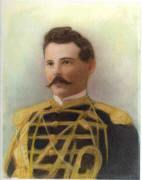
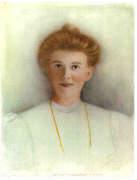 On
May 8th, 1902, William married Andrea Amelia Ingebrigtsen at
Highland Falls, New York. By then, William had been in the Army for 15 years and was well established.
On
May 8th, 1902, William married Andrea Amelia Ingebrigtsen at
Highland Falls, New York. By then, William had been in the Army for 15 years and was well established.
Andrea was born on November 1st, 1877 in Bergen, Norway, the daughter of Absalon Johan Ingebrigtsen and Anne Marie Knudtsen. Andrea's father was a tailor by trade, although may have been a lawyer in Europe. He died on May 29th, 1907 at Fort Slocum, Westchester County, New York. Andrea was the youngest child and had three sisters Anna, Rogna and Ingrid. Her mother died when she was about nine years old.
A picture of William and Andrea's life together came be pieced together from the record of their children's births, the US census records and the very detailed records kept by the US military.
West Point
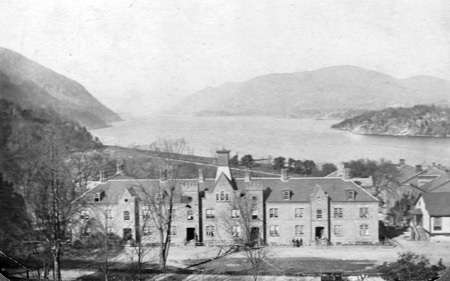 West Point Academy, circa 1902
West Point Academy, circa 1902 The United States Military Academy at West Point was the premier officer training centre for the US Army.
On April 18, 1902, thirty-two year old William finished his third enlistment while at West Point and the next day reenlisted for a fourth term with the rank of third class musician in the 8th Cavalry band.
The highest ranking cadet in that year's graduating class was a 23 year old named Douglas MacArthur. Another member of the class was Ulysses S. Grant.
William's military postings can be determined by the birthplaces of his children. In 1903 the family was in New York. In 1905, they were at Jefferson Barracks, Jefferson County, Missouri.
William's next term ended on April 18, 1905 while he was stationed at Fort W. McKinley, Philippine Islands. Once again his service is listed as excellent and he is health and fit. By then he held the rank of Chief Musician in the 8th Cavalry Band.
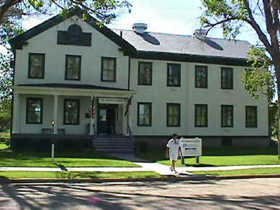 Fort Robinson, Nebraska H.Q. Building
Fort Robinson, Nebraska H.Q. Building On October, 24, 1906 at about 7:00 p.m. the 8th Cavalry Band arrived in Port in the Philippines with 30 musicians led by William. The were posted to Camp Wallace, Luzon, Philippine Islands.
1906 saw them posted to Fort McKinney in the Philippine Islands. From 1908 until at least 1910 they were at Fort Robinson, Nebraska. The 1910 Census records the family, then with the four oldest children, at Fort Robinson, Dawes County, Nebraska.
The 1920 Census records the family, with all ten children at home, living at Woodman, Jefferson, Washington State which is a part of present day Port Townsend. The 1930 Census records the family still living in Port Townsend, Washington State. By then the four eldest daughters, Lillian, Ellen, Ruth and Melba had left home. Lillian and Melba were living together in Seattle where Lillian was a school teacher and Melba a stenographer.
Music
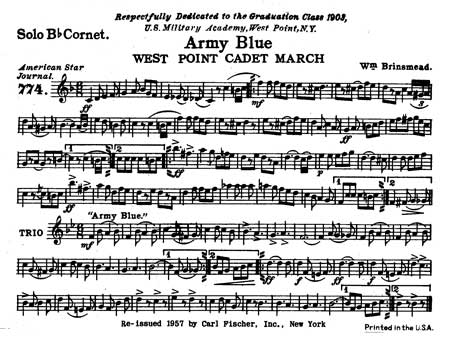 The Cornet Score from William's Composition "Army Blue".
The Cornet Score from William's Composition "Army Blue".
Click to Play - file prepared for Brian Huseland by Bob Homkes
William is known to have composed band music. His own instrument was the cornet. He is said to have worked with the famous John Phillip Sousa.
We have one piece in our collection which is the full marching band score entitled Army Blue - West Point Cadet March. It is headed "Respectfully Dedicated to the Graduation Class 1903, U.S.Military Academy, West Point, N.Y." The score was published by Carl Fischer, New York. It has since been played by many bands across the United States and is still being played.
Retirement
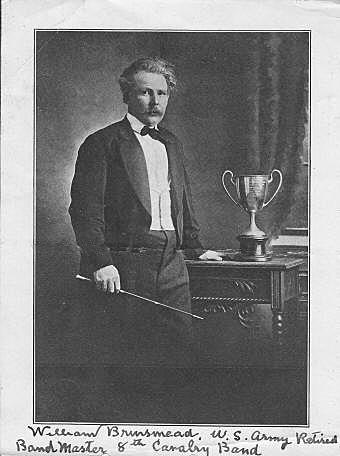 William Brinsmead on his retirement in 1913 with the Cup presented to him on the occasion.
William Brinsmead on his retirement in 1913 with the Cup presented to him on the occasion. William's retirement was marked by a special ceremony at the military base in Manila where he was posted at the time. He was by then only 48 but had served for 25 continuous years, spanning seven postings.
The family settled in Port Townsend, Jefferson County, Washington State. The 1920 Census records the family, with all ten children at home, living at Woodman, Jefferson, Washington State which is a part of present day Port Townsend. The 1930 Census records the family still living in Port Townsend, Washington State. By then the four eldest daughters, Lillian, Ellen, Ruth and Melba had left home. Lillian and Melba were living together in Seattle where Lillian was a school teacher and Melba a stenographer.
In his later years after retirement, William continued to be involved with the Army working as the last military caretaker at Fort Townsend, Washington. The Fort is now a Washington State Park, overlooking the water at the west dock for the Bremerton Ferry.
Death
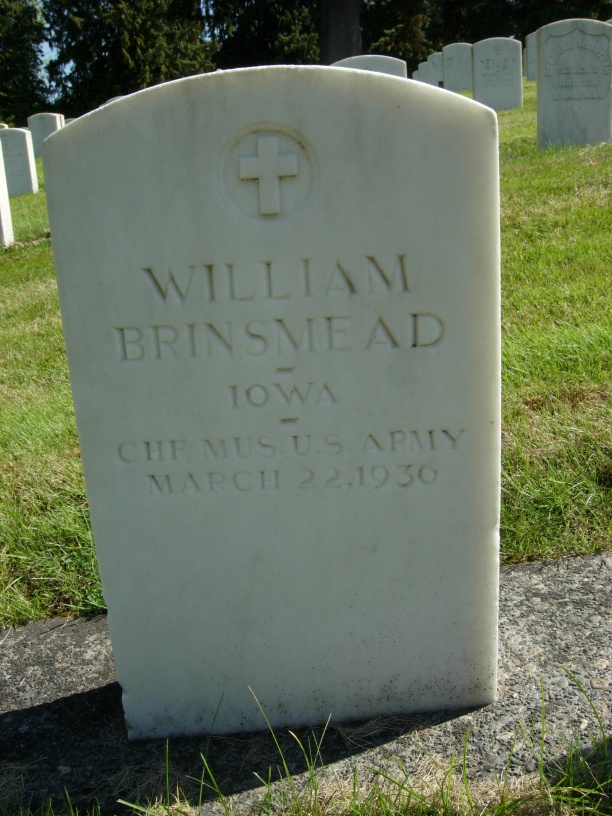 William Brinsmead's Gravestone
William Brinsmead's Gravestone
William passed away on March 22nd, 1936 in Bremerton, Washington. His remains are buried in the Evergreen Washili Memorial Park in the Veterans Memorial Cemetery Belleau Woods Section.
Andrea died two years later, on October 8th, 1938. Her ashes are interred at the Sanctuary of Peace Mausoleum, Washili Memorial Park, in Seattle.
